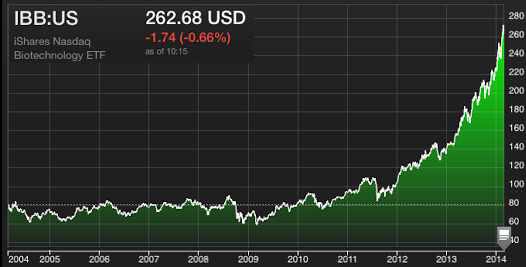The idea of “risk management” is often bad mouthed by people who have fallen in love with Modern Portfolio Theory and Efficient Market Hypothesis. They tend to think that “risk managers” are frantically swapping in and out of positions or glued to the TV so they can respond (after the fact) to the latest “risks”. I don’t think of risk management in that sort of manner. In my view, “risk management” is largely about understanding the big picture so you can better decipher the world.
One of the concepts I’ve developed in recent years, as a risk management tool, is the idea of “price compression”. Price compression is when market participants price in many years worth of future performance into the current price. They are, in effect, buying today with the expectation that future earnings will justify current prices. When you combine this concept with an understanding of behavioral finance and the understanding that market expectations can become irrational, you can build some understanding behind the concept of market bubbles. As I’ve described before, A bubble is an environment in which the market price of an asset has deviated from the underlying asset’s fundamentals to an extent that renders the current market price unstable relative to the underlying asset’s ability to deliver the expected result.
I like to think of this as a long-term price trend becoming “compressed” into the present. Take for instance, the current price action in biotechs (see the chart below). There’s a very rational story here based on the idea that biotechs are changing modern medicine. But investors aren’t waiting 5 or 10 years for the earnings in these firms to come to fruition. Instead, they’re buying these firms now based on the expectation that the underlying fundamentals will eventually justify the current prices. They might be right. But what this price compression does is build in an element of instability as that future stream of cash flows becomes contingent on lots of intermediate term uncertainty. And in a market filled with irrational participants, well, that makes it ripe for higher than normal risks.
(Who buys stuff like this?)
And that’s the thing about concepts like price compression and risk management. Through understanding price dynamics and the inherent behavioral risks of market participants, we can manage risks not by guessing where we need to be all the time, but by simply seeing the madness of the crowd and AVOIDING it.
Mr. Roche is the Founder and Chief Investment Officer of Discipline Funds.Discipline Funds is a low fee financial advisory firm with a focus on helping people be more disciplined with their finances.
He is also the author of Pragmatic Capitalism: What Every Investor Needs to Understand About Money and Finance, Understanding the Modern Monetary System and Understanding Modern Portfolio Construction.


Comments are closed.